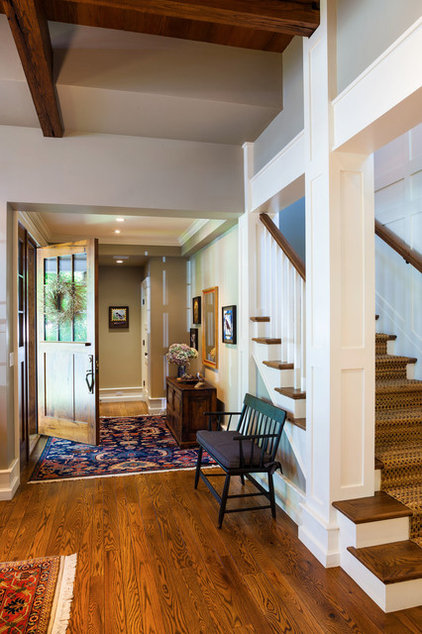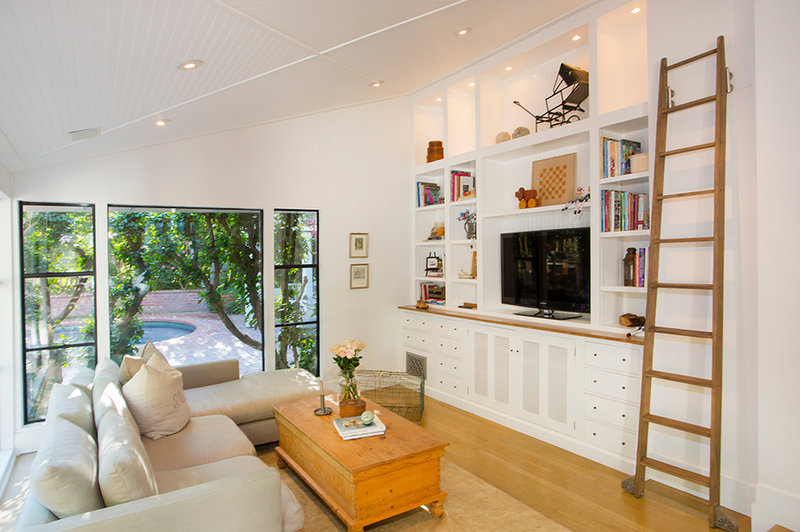Selling a house is a major undertaking. Where do you begin? First you’ll need to establish a big-picture view of how to prepare it. This ideabook will help you do that, so you can get your home in shape to sell quickly at the best possible price (without breaking your budget).
The project: Get a home ready to sell.
Why: Taking the time to prepare your home before putting it on the market can help it fetch a higher price and increase buyer interest, making for a quicker sale. Taking a big-picture look at what to do to get your home ready to sell will help ensure that you make the best decisions and stay under budget.
Things to consider: It makes sense to start with the outside of your home, since that is what potential buyers will notice first. Shoot for nice landscaping, a freshly cleaned exterior, a driveway and walking path in good repair, a well-lit porch and an eye-catching front door.

Make a list early on of all of the repairs your home needs, from the tiny (change a lightbulb) to the major (new roof) before deciding what to get done. The fact is that the cost of most repairs and upgrades will not be recouped in the sale price, so focus on taking care of the minor repairs and tackle bigger projects only if you feel you must.

Remove clutter and organize what’s left. Any real estate agent or home stager will tell you that getting rid of clutter and excess personal items is essential to making your home look its best to potential buyers. Less stuff will make your space look larger, which is almost always a positive thing. Overstuffed closets and drawers signal to buyers that there is not enough storage space in the home, while neat and orderly closets help buyers envision living an organized life in your house.
If you need to get a lot of furniture and accessories out of your home while it’s on the market, think about renting a storage unit. The cost could be worth it if it means your house shows better and sells faster (and hopefully for more money).

Who to hire: The pros you’ll hire to help prep your home for sale will depend on how much work your home needs and on how much work you plan to do yourself. Consider these:•Real estate agent: This is the first pro you will want to hire. Your Realtor should be able to give you an honest assessment of what your house needs to position it well on the market.
•Handyperson: Hiring a handyperson for a single day is often enough to take care of a whole list of small repairs.
•Electrician: Get that broken doorbell and porch light fixed, and update interior lighting.
•Cleaning service: Getting your house sparkling clean is a low-cost way to make your home look its best. A professional house cleaning team can make your house shine in a single day.

•Painter: A fresh coat of paint indoors and out is a surefire way to make your home stand out.
•Stager: A professional home stager can help declutter your home, arrange furniture (sometimes bringing in loaner furniture) and accessories, and make paint and landscaping recommendations to get your home in top shape for a quick and profitable sale.
•Landscape designer or gardener: Landscaping consistently makes the list of things that can influence a home sale. If you do not have a green thumb, it could be worth it to invest in pro services from someone who does.

Cost breakdown: Sage advice is to spend as little as possible on your home to prepare it for sale. Small changes and upgrades will give it a boost in perceived value without your having to dip too far into your savings.
•Expect to pay $50 to $85 per hour for a handyman and $60 to $100 per hour and up for an electrician.
•Home staging consultations (you implement most of the changes) run $150 to $500, but it can cost $2,000 and (way) up for full-service staging and furniture rentals.
•Should you decide to rent a storage unit, expect to pay about $100 per month for a 10- by 15-foot unit.
•House painting generally costs about $2 to $4 per square foot.

If you can, begin preparations the year before you plan to sell to give landscaping time to fill in, and to give yourself ample time to get work done. For instance, you could plant spring bulbs in the fall, take care of interior house repairs in winter and finish up the rest of your projects in spring to ready your home for its first open house in early summer.

First steps:
1.Interview and choose a real estate agent.
2.Assess your property — not just the value but also what could be done to the interior or exterior to appeal to more buyers.
3.Decide what work you are going to do yourself and what you would like a pro to do.
4.Hire a home stager. Your stager will have important input on what repairs and changes will be most worth your time and money, and which ones to skip.
5.Hire additional pros as needed, starting with a landscaper. Remember, the landscape needs time to fill in.













